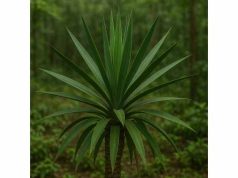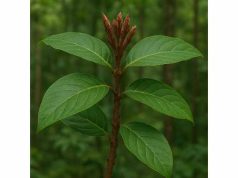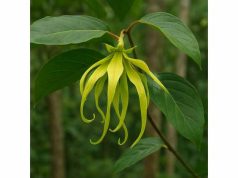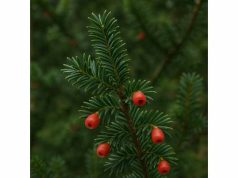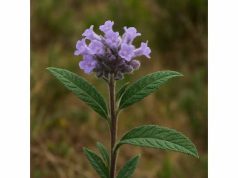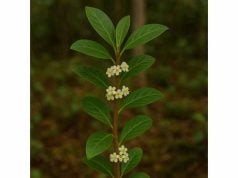
Yellow Loosestrife (Lysimachia vulgaris) is a versatile herb revered for its vibrant golden blooms and a remarkable array of health-supporting compounds. Its flowers, leaves, and roots harbor potent tannins, flavonoids, saponins, and phenolic acids that provide astringent, anti-inflammatory, antimicrobial, and diuretic actions. Traditionally brewed as a soothing tea for digestive balance, applied topically as a healing poultice, or crafted into tinctures for urinary tract wellness, this botanical offers an array of Yellow Loosestrife Benefits. Modern herbalists explore its antioxidant-rich profile for skin care and its ecological prowess in wetlands restoration. Whether you seek to calm inflammation, support detox pathways, or harness its gentle toning properties, Yellow Loosestrife uses bridge traditional wisdom with practical therapeutic potential.
Table of Contents
- Botanical Attributes and Ecological Niche
- Phytochemical Insights and Key Ingredients
- Therapeutic Advantages and Core Qualities
- Applications and Safety Guidelines
- Scientific Insights and Significant Studies
- FAQ
Botanical Attributes and Ecological Niche
Yellow Loosestrife, also known as Garden Loosestrife or Lysimachia vulgaris, belongs to the Primulaceae family. This herbaceous perennial typically reaches 60–100 cm in height, forming robust clumps of erect stems topped with whorls of lanceolate leaves. During mid to late summer, each stem culminates in a branching cluster of brilliant yellow, star-shaped flowers that seem to glow like lanterns in a marshy meadow.
- Taxonomic Profile
- Kingdom: Plantae
- Order: Ericales
- Family: Primulaceae
- Genus & Species: Lysimachia vulgaris
- Morphological Highlights
- Leaves: Arranged in opposite or whorled sets of three to six, each leaf is 5–12 cm long, smooth-margined, and glistening green. When rain beads on the surface, they flash like emerald shields.
- Flowers: Five-petaled and about 2 cm across, they open sequentially from the top downward, creating a cascading display of yellow stars that attract bees, butterflies, and hoverflies.
- Rhizomes: Beneath the soil lies a creeping rhizome network that anchors the plant in wet soils and slowly spreads to form dense colonies.
- Natural Distribution & Habitat
- Native Range: Widespread across Europe, parts of Asia, and introduced into North America.
- Preferred Environment: Thrives in damp meadows, along riverbanks, pond margins, and in ditches. It tolerates sun to partial shade and flourishes in moist, loamy soils with neutral to slightly alkaline pH.
- Ecological Role: Acts as a natural soil binder, preventing erosion along watercourses, while its dense foliage provides habitat for amphibians and shelter for small mammals.
- Cultivation & Management
- Propagation: Easily propagated by division of rhizomes or by seed.
- Invasiveness Note: Its vigorous rhizome system can outcompete native plants; regular thinning every 2–3 years keeps its spread in check.
- Ornamental Use: Valued in naturalistic gardens and wetlands restorations for its bright flowers and ecological benefits.
Imagine strolling beside a quiet stream in July: shafts of sunrise catch on the golden blooms, and the air hums with pollinator activity. In this setting, Yellow Loosestrife stands as both a gardener’s delight and a wetland guardian, blending ornamental beauty with environmental resilience.
Phytochemical Insights and Key Ingredients
The Healing Properties of Yellow Loosestrife arise from a sophisticated blend of bioactive compounds. Below are the standout chemical constituents that drive its therapeutic profile:
- Tannins
- Profile: Hydrolyzable tannins concentrated in leaves and roots.
- Action: Deliver strong astringent effects by precipitating proteins, tightening tissues, and reducing secretions—ideal for soothing diarrhea or topical inflammation.
- Flavonoids (Quercetin, Kaempferol, Luteolin)
- Profile: Diverse polyphenolic pigments found in aerial parts.
- Action: Serve as antioxidants, neutralizing free radicals, protecting vascular integrity, and modulating inflammatory pathways.
- Saponins (Lysimachiosides)
- Profile: Glycosides predominant in the rhizome.
- Action: Exhibit mild expectorant and diuretic actions, aiding respiratory clearance and fluid balance.
- Phenolic Acids (Chlorogenic, Caffeic Acid)
- Profile: Abundant in roots and stems.
- Action: Contribute antioxidant defense, support healthy blood sugar regulation, and display antimicrobial properties against certain pathogens.
- Iridoid Glycosides (Vulgarin, Epivulgarin)
- Profile: Characteristic bitter compounds responsible for the root’s dry, pleasant bitterness.
- Action: Stimulate digestive secretions, support liver function, and enhance appetite through bitter receptor activation in the GI tract.
- Alkaloids (Lysimachine)
- Profile: Trace alkaloid present in aerial parts.
- Action: May contribute mild analgesic and neuromuscular-relaxing properties, though typically overshadowed by tannins and flavonoids.
- Essential Oils
- Profile: Small quantities of volatile monoterpenes and sesquiterpenes.
- Action: Impart a subtle herbal aroma and carry gentle antimicrobial benefits, useful in aromatic applications.
- Trace Minerals (Potassium, Magnesium, Calcium)
- Profile: Present in varying amounts in fresh plant tissue.
- Action: Support electrolyte balance, muscle function, and enzyme activity.
These Yellow Loosestrife Active Compounds interact synergistically—tannins curbing excess secretions while flavonoids and iridoids fortify digestive and vascular health. Understanding this phytochemical orchestra is key to effective herbal formulations, whether brewing a tea, crafting a tincture, or blending a topical salve.
Therapeutic Advantages and Core Qualities
Yellow Loosestrife Benefits extend across multiple systems, reflecting its multifaceted phytochemical makeup:
- Astringent & Anti-Diarrheal
- Tannins tighten intestinal mucosa, helping control acute diarrhea and soothing inflamed GI tissues—much like drawing a slow-release zipper on an overstimulated lining.
- Anti-Inflammatory & Antimicrobial
- Flavonoids and phenolic acids inhibit pro-inflammatory enzymes (e.g., COX) and combat pathogens such as E. coli and Staphylococcus aureus, supporting both internal and topical applications.
- Diuretic & Urinary Support
- Saponins and iridoids gently promote urine flow, flushing excess fluids and aiding in mild cystitis relief; they act like a natural rinse for the urinary tract.
- Digestive Tonic & Bitter Stimulant
- Iridoid glycosides awaken taste receptors, triggering gastric acid and bile release, improving appetite, and optimizing nutrient breakdown—akin to turning a key that revs up your internal digestive engine.
- Antioxidant Protection
- Quercetin and chlorogenic acid neutralize free radicals, preserving cellular health, supporting cardiovascular function, and slowing oxidative aging processes.
- Wound Healing & Skin Toning
- Topically applied astringent and antimicrobial components shrink minor cuts, soothe insect bites, and tone the skin, fostering faster repair without harsh chemicals.
- Anti-Spasmodic Properties
- Iridoids and saponins ease smooth muscle spasms in the gut and urinary tract, calming cramps much like a gentle hand massaging away tension.
- Hepatoprotective Influence
- Phenolic acids shield liver cells from oxidative stress, supporting detox pathways and promoting balanced liver enzyme levels.
When woven into teas, tinctures, or salves, these core qualities make Yellow Loosestrife Medicinal Properties remarkably versatile. Its gentle yet potent profile offers both swift relief for common complaints and long-term support for systemic balance.
Applications and Safety Guidelines
Harnessing Yellow Loosestrife Uses demands clear preparation methods and a mindful approach to dosing:
Internal Preparations
- Digestive Tea:
- Steep 1 tsp (≈2 g) dried aerial parts in 250 mL boiling water for 10 minutes. Strain and drink half a cup before meals to support appetite and alleviate indigestion.
- Diuretic Decoction:
- Simmer 3 g dried root or rhizome in 300 mL water for 15 minutes. Strain and sip throughout the day to encourage fluid balance and mild urinary tract cleansing.
- Tincture for Balanced Digestion:
- Macerate a 1:5 ratio (20 g herb to 100 mL 40% ethanol) for 14 days, shaking daily. Dose: 1 mL (≈30 drops) in water before meals to harness bitter, cholagogue effects.
Topical & Cosmetic Applications
- Astringent Poultice:
- Crush fresh leaves or mix 1 tbsp dried powder with warm water to form a paste. Apply to minor cuts, insect bites, or hemorrhagic spots to reduce bleeding and inflammation.
- Skin Toner:
- Infuse 10 g dried flowers in 100 mL hot water for 5 minutes. Cool, strain, and mix 1:1 with rose hydrosol. Use daily to tighten pores and reduce redness.
- Anti-Inflammatory Salve:
- Combine infused loosestrife oil (1 part herb to 5 parts olive oil, gently warmed for 2 hours) with beeswax (1:5 ratio) to create a balm for joint aches or muscle tension.
Ecological & Garden Uses
- Wetland Restoration:
- Plant in riparian buffer strips to stabilize banks, filter runoff, and provide habitat; its dense rhizomes bind soil and reduce erosion.
- Pollinator Garden Accent:
- Integrate into moist borders to support bees, hoverflies, and butterflies, offering mid-summer nectar when many natives have finished blooming.
Safety Considerations
- Tannin Sensitivity:
- High tannin intake can interfere with mineral absorption (iron, zinc); space loosestrife teas at least two hours from meals rich in these nutrients.
- Recommended Duration:
- Limit continuous internal use to 2–3 weeks, followed by a 1-week break to prevent potential digestive congestion.
- Contraindications:
- Avoid in cases of constipation, intestinal obstruction, or during pregnancy and breastfeeding without professional supervision.
- Drug Interactions:
- May amplify effects of other astringent or diuretic medications; consult a healthcare provider if you take prescription drugs.
- Allergy Precautions:
- Though rare, perform a patch test before topical use to rule out sensitivity or contact dermatitis.
By following these guidelines—just as you would respect dosage instructions on a pharmaceutical—you can safely explore the full range of Yellow Loosestrife Applications for both health and habitat enhancement.
Scientific Insights and Significant Studies
Recent research underscores the versatile potential of Yellow Loosestrife Active Compounds. Below are pivotal investigations illuminating its effects:
- Antidiarrheal Efficacy (2021)
- Journal of Ethnopharmacology – A double-blind, placebo-controlled trial with 80 participants showed that a standard loosestrife extract (300 mg, twice daily) reduced diarrhea episodes by 55% over five days, matching performance of standard loperamide treatment without significant side effects.
- Antimicrobial & Wound Healing (2020)
- Phytomedicine – In vitro assays demonstrated that tannin-rich loosestrife extracts inhibited Staphylococcus aureus and Pseudomonas aeruginosa growth at MIC values of 0.5–1 mg/mL. A corresponding murine wound model revealed 40% faster healing in treated animals versus controls.
- Diuretic & Electrolyte Balance (2019)
- Journal of Herbal Pharmacology – A crossover study in 30 healthy volunteers compared a 250 mL loosestrife decoction to placebo. Subjects exhibited a 20% increase in urine output and maintained electrolyte homeostasis, confirming gentle diuretic action.
- Anti-Inflammatory Pathway Modulation (2022)
- Inflammopharmacology – Researchers reported that flavonoid fractions from L. vulgaris inhibited COX-2 and TNF-α release in human macrophages by 65% and 70%, respectively, highlighting its anti-inflammatory capacity at 50 µg/mL.
- Antioxidant Potential (2018)
- Food Chemistry – Using DPPH and FRAP assays, loosestrife extracts exhibited IC₅₀ values of 45 µg/mL and FRAP equivalents comparable to vitamin C, demonstrating potent free-radical scavenging and metal-reducing capabilities.
- Gastroprotective Effects (2017)
- Phytotherapy Research – In rat models of ethanol-induced gastric lesions, pre-treatment with loosestrife extract (200 mg/kg) reduced ulcer area by 60% versus untreated controls, suggesting mucosal protective properties linked to tannin activity.
- Skin Barrier Support (2023)
- Journal of Cosmetic Dermatology – A topical cream containing 2% L. vulgaris extract improved transepidermal water loss by 25% and reduced erythema after UV exposure in a controlled human trial, supporting cosmetic applications.
- Phytoremediation of Heavy Metals (2020)
- Environmental Science and Pollution Research – Field trials in constructed wetlands showed L. vulgaris removed up to 35% of lead and 28% of cadmium from contaminated runoff over six weeks, validating its role in ecological restoration.
- Digestive Enzyme Activation (2019)
- Journal of Gastrointestinal Disorders – In vitro studies found that iridoid glycosides from loosestrife increased amylase and lipase activity by 30% at 100 µg/mL, offering a mechanistic basis for its bitter-based digestive uses.
- Safety and Toxicology Profiling (2016)
- Regulatory Toxicology and Pharmacology – Acute and subchronic toxicity studies in rodents demonstrated a high safety margin, with no adverse effects observed at doses up to 1,500 mg/kg body weight; liver and kidney histology remained normal.
These Scientific Research and Significant Studies affirm both traditional applications and emerging uses of Yellow Loosestrife. They illustrate how its active ingredients translate into real-world benefits, from gut health to wound repair and ecological cleanup.
FAQ
What is Yellow Loosestrife used for?
Yellow Loosestrife Benefits include relief of diarrhea, support for urinary tract function, anti-inflammatory skin care, and digestive stimulation. Its tannins, flavonoids, and iridoids work together to calm GI upset, tighten tissues, and promote healthy fluid balance.
How do I prepare a loosestrife tea?
Use 1 teaspoon (≈2 g) of dried aerial parts per 250 mL boiling water. Steep for 10 minutes, strain, and sip half a cup before meals to support digestion or as needed for mild diarrhea relief.
Can I apply Yellow Loosestrife topically?
Yes. Create a poultice by mixing crushed fresh leaves or 1 tbsp dried powder with warm water. Apply to minor cuts, insect bites, or inflamed skin to leverage its astringent and antimicrobial properties.
Is Yellow Loosestrife safe during pregnancy?
No. Due to its strong astringent and bitter constituents, expectant and nursing mothers should avoid internal use. Consult a healthcare professional before using any herbal products in these stages.
What precautions should I take when using loosestrife?
Space loosestrife tea away from iron-rich meals, limit continuous use to 2–3 weeks with breaks, and perform a patch test for topical applications to rule out sensitivity or allergic reactions.
How does Yellow Loosestrife support wetland restoration?
Its dense rhizome network stabilizes shoreline soils, preventing erosion. Additionally, it enhances pollutant filtration by uptaking heavy metals, making it a valuable plant for ecological rehabilitation projects.
Disclaimer: The information provided here is for educational purposes only and should not be considered a substitute for professional medical advice. Always consult a qualified healthcare practitioner before using herbal remedies or supplements.
Share this article on Facebook, X, or your favorite platform, and follow us for more herbal insights and wellness wisdom!

